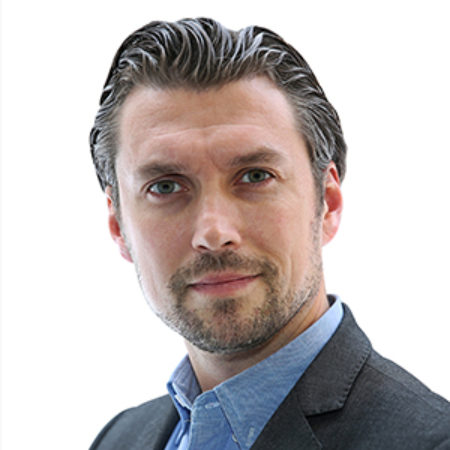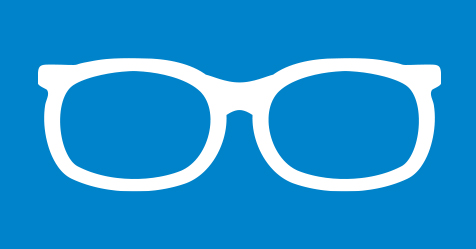The cleaning industry is in the midst of a revolution.
The advent of more efficient and effective technologies has made it possible to maintain cleaner and healthier facilities than ever before. Yet, this opportunity has also given rise to new risks and responsibilities.
Electrostatic spraying is one such technology leading the industry down this path. Widely used in the manufacturing, service, and agricultural sectors for more than 50 years, industrial grade electrostatic spraying systems have proven to be one of the fastest and most economical methods for applying chemicals and surface coatings.
Evolution of Equipment
Before the introduction of electrostatic technology, traditional spray equipment had problems with transfer efficiency (the measure of how much chemical reaches the surface versus the percentage lost to the floor and surrounding environment). In industrial painting applications, this typically meant about 25% of the paint adhered to the surface, while 75% was lost to other areas. The result was a slow and costly process.
The numbers weren’t much better in agriculture when crop spraying. Typical pesticide waste averaged 50% with traditional spray methods, posing pesticide contamination risks to public waterways and the surrounding environment due to wind drift.
With the emergence of electrostatic spraying technology, which creates a magnetic attraction between the spray droplets and the targeted surface, transfer efficiencies skyrocketed in certain industries. For auto assembly lines, this meant car painting could be done 80% faster, with more than 50% savings in paint usage, and for agriculture use, pesticides could be contained to target areas.
Disrupting Industry Traditions
The cleaning and infection prevention sector is another industry ripe for disruption and improvement beyond the limitations of its existing tools. The industry has done well enough throughout the years to improve disinfectant and sanitizing chemistries. However, the lack of time, resources, and budgets necessary to stay ahead of ever-growing public health threats continues to pose challenges.
One chief concern has been the inability to achieve more complete surface coverage within a limited timeframe. The U.S. Centers for Disease Control and Prevention (CDC) estimates 50% of hospital room surfaces are left uncleaned. Outside of health care, the percentage is even higher.
The job of a cleaning professional is not an easy one. Using traditional tools like mops, buckets, or rags can take more time than other methods to effectively clean, sanitize, or disinfect surfaces and remove lurking pathogens. At a time when the stakes are higher than ever before, addressing time constraints, reaching more spaces, and increasing compliance are critical, but with cleaning budgets continuing to decline, hiring additional staff isn’t the answer.
Adoption of New Technologies
Given the challenges our industry faces each day, it would seem that electrostatics would have been adopted for disinfection purposes decades ago. However, it wasn’t until the past few years that electrostatic spraying technology became portable, economical, and simple enough to use, making it a more reasonable and practical option for facility managers and service contractors to consider.
Now, rather than using traditional approaches to reactively contain outbreaks once the public is already ill, the cleaning industry can proactively prevent infectious outbreaks with enhanced disinfection measures. New electrostatic technologies offer promising potential with faster disinfection time and greater surface coverage per ounce. The ability to apply disinfectants at a rate up to 10-times greater than traditional tools is a winning proposition for most cleaning professionals.
Responsible Processes for Safer Chemical Application
With wide-scale adoption of this revolutionary technology comes the responsibility to implement proper usage guidelines. Processes must be established to ensure safe and effective application of chemicals in a manner that protects the public health as well as that of custodial teams.
Without standardized processes for safe and compliant use, the benefits of electrostatics could be outweighed by the potential for reckless misuse. The responsibility lies with both the equipment and chemical manufacturers to ensure that sprayer specifications are properly aligned with the appropriate chemistry, as the resulting protocols must be consistent with the registered chemical claims and regulatory guidelines for worker safety.
While there are chemicals available that are well-suited for electrostatic application, there are others that are not due to potential safety hazards or material incompatibilities, and it is the responsibility of all parties to ensure those considerations are taken into account. When utilized properly, features such as droplet size, spray patterns, sprayer output, charge mechanism, and chemical equivalency can help optimize processes to ensure they are as practical and affordable as they are safe, effective, and scalable.
It is important for operators to remember that electrostatics is not a free pass to blanket the world in more chemicals, but rather to leverage the technology’s efficiency to do more with less.
Increasing Compliance
Compliance is another key challenge the cleaning industry continuously faces. In our industry, levels of compliance are directly proportional to cleaning success. High-level compliance around industry best practices leads to good quality results, healthier populations, and safer and cleaner facilities. Low levels not only lead to poor results but make it difficult for cleaning managers to achieve consistency across teams of different sizes. Ultimately, cleaning protocols tailored around electrostatic technology should meet five criteria to truly support compliance: cost efficient, accessible, practical, safe, and scalable.
Standardization of cleaning and electrostatic disinfection processes would go a long way toward solving many compliance concerns. Best practices include consolidating (whenever possible) around a universal broad-spectrum disinfectant that achieves maximum safety and effectiveness. Less chemical variation leads to simpler processes. Implementing a touchless disinfection protocol also allows teams to make safer and more environmentally preferable choices for the cleaning products they use to physically remove soil.
Once teams standardize programs and realize time-saving efficiencies, they should then increase the frequency of carrying out disinfection protocols to improve their ability to prevent outbreaks, rather than waiting for the outbreaks to occur. Lastly, quality control and accountability measures should be implemented to ensure proper usage and results over time.
In industries needing a simple pass/fail verification of “clean,” ATP meters would suffice. For facilities requiring more in-depth and measurable data, there are now fast and cost-effective swab culturing programs that can help better predict trends and ensure the effectiveness of any electrostatic disinfection protocol.
Training and Simple Protocols Encourage Efficiency
To successfully introduce a new technology to cleaning professionals, the process should be as clear and streamlined as possible. But in the cleaning industry, where multilingual staff and high turnover rates are prevalent, it’s all the more crucial for training programs and processes to be simplified so they can be replicated and easily scaled. Assistive technology like electrostatics goes a long way toward bridging gaps in staff experience levels and ensuring a more consistent outcome.
Current cleaning protocols require staff to physically touch every surface to eliminate pathogens. If asked, most cleaning professionals would respond to this requirement in two ways: First, there isn’t enough time to touch every surface; and second, if the surface looks clean, then there’s no need to do anything. This is where touchless electrostatic disinfection technology becomes fundamental in empowering users with the ability to eliminate pathogens more effectively.
At the end of the day, the focus is all about eliminating instances for potential breakdown. Instead of expecting users to understand multiple chemical usage guides and dwell times, users can choose one chemistry that works for every stage of the cleaning process. One set of directions for both cleaning and disinfecting increases worker safety and eliminates chemical hazards and exposure, while also ensuring a higher level of compliance in chemical usage concentration and dwell time.
An Investment in the Future of Cleaning
Outlining well-defined safety precautions and clear guidelines before wide-scale implementation of new disinfection technology is a necessary responsibility both equipment and chemical manufacturers share. But, it’s a small price to pay to protect the health and safety of everyone concerned; additionally, it will secure the transformative potential for electrostatic technology to successfully mitigate the growing public health crisis for many years to come.



